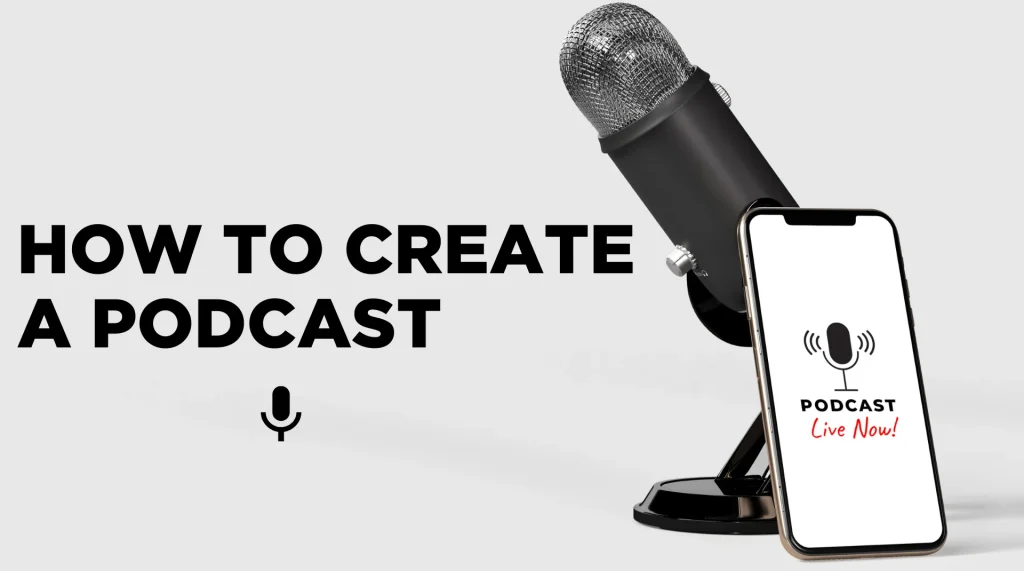Video podcasting has become one of the most increasingly popular platforms for the content creators to build their brand and connect with the relevant audience. It is also considered a great tool for content marketing strategies. Video podcasting is considered as an essential part of marketing strategy for many organizations. It offers various business ideas, knowledge and inspiration for the entrepreneurs, professionals and every individual who are linked in the world of business and other professions. It provides a platform for the professionals, industry holders and entrepreneurs to share their expertise, knowledge, insights in an engaging manner. In today’s digital and advanced world, making a podcast is not complex and difficult. This blog provides detailed information about how to create a podcast in simple and easy steps, BY following the given steps anyone can create a podcast with ease.
1. Planning
The very first step for creating a podcast is to plan perfectly a podcast before starting recording. It’s a good idea to create a plan for the podcast. This will help to stay organized and can enhance the quality of the content. Here are a few tips to consider while making a plan:
- Outline: While the podcast is dealing with a complicated topic, be sure to make an outline or a proper sequence for the podcast. Making the notes or notepad will also help to avoid awkward silences, dead air, or misinformation.
- Episode length: Maintain how long you want each episode to be. Consistency will increase the production value and popularity of the podcast.
- Scheduling episodes: Make a schedule to publish episodes weekly, biweekly, monthly, etc. so the viewers will know what to expect each and every week.
2. Identify the Topic or Theme
The second step while creating a podcast is to choose a perfect topic or theme combination. The topic selection played an important role to hit a video podcast. The theme, niche and topic selection is considered about what you are passionate about and what you are knowledgeable in. The topic can be Chosen in which the host is passionate about and can perfectly speak on for a long time. Additionally, the topic and theme should be unique and relevant to the interest of the audience.
3. Equipment Setup
The next step is to set up the podcast equipment to record the podcast. If you do not have proper podcast equipment, invest in getting the right podcast equipment. Because it helps to improve the visual and sound quality of the podcast by making it visual and sound clearer and reliable. Whether it is any type of podcast such as in-person interviewees, with another podcast host, or over Zoom or Skype, having quality equipment can help improve the quality.
4. Choose Right Recording and Editing Software
The next step, the podcaster should choose the right professional software for the recording footage. It is better to choose one that the podcaster specializes in, so that he finds all the features on it. The separate track recording is better for editing control and choosing the software that can capture high-quality video and audio.
5. Start Recording
Recording a podcast looks more complicated than it really is. It takes the following series of steps to prepare and manage an effective podcast recording. the steps are given below to record professional looking podcast:
- Find a room with solid sound
- Adjust systems
- Set a conversational recording level
- Record video in high quality
- Be consistent with the face placement and tone
- Make a test recording
6. Record Intro and Outro
Recording intro and outro for each episode adds flair and personality to the podcast. Mostly the intro contains the episode number, the host, and the hook or tagline of the video podcast. By recording intro and outro tell the audience about who you are, what your podcast is about, and how they will benefit from the podcast episode. The podcast outro thanks the viewers for tuning in, and includes the tag line. It is also called call to action. It also helps to develop relations with the audience.
7. Editing
Edit the recorded footage by the selected software in which you are interested in. Because it does not have complicated but makes a huge impact by enhancing the overall quality of the podcast. Read how to edit a video podcast in detail.
8. Choose Hosting Platform
One major thing that people misunderstand about podcasts is that the podcaster doesn’t upload them directly to a podcast platform like Apple Podcasts, Spotify, or Stitcher. Instead, podcasters need a separate host for your video content. The podcaster can use some podcast hosting platforms which includes:
- Buzzsprout
- Transistor
- PodBean
It makes sure that the podcasts are automatically published on a particular podcast directory. If the podcast is using a hosting site like Transistor, then he/she can submit the podcast to all of the major directories directly from your dashboard.
9. Promote and Monetize
After publishing the podcast on the hosting platform, it should be essential to promote the podcast on different social media platforms and then monetize it. The last step is to promote the podcast by creating a podcast website. Blogging about new episodes and related topics. It is a great way to engage new podcast viewers and improve the search engine optimization, or SEO. SEO helps position your website on search results pages and is one of the best tools to get new subscribers. Then monetize your podcast and earn from making podcasts. You can earn up to $10,000 per month from the video podcasts. Read how to earn $10,000 per month from a video podcast.
